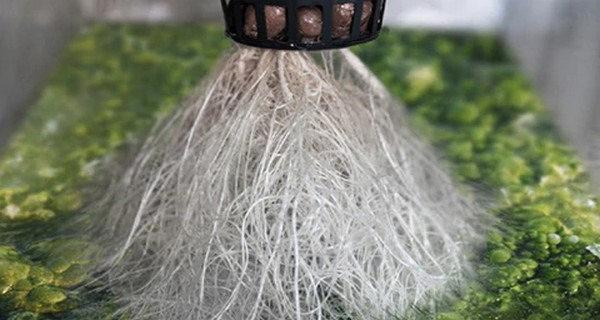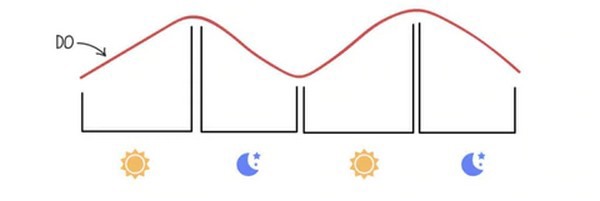Selecting the right organic hydroponic nutrient for your hydroponic or soilless system is a big decision for your greenhouse, vertical farm or indoor farm. With so many factors to take into consideration when assessing the spectrum of options that exist, growers can find themselves at crossroads. In reality, every indoor grower should ask their nutrient supplier the same.

This publication will focus on identifying whether your nutrient will reduce or increase the risk of algae growing in your soilless system.
Understanding algae in a soilless growing system
Algae needs three things to thrive: light, water, and nutrients. When all three are present, the likelihood of algae germinating increases exponentially. This matters for an indoor grower because the build-up of algae can lead to problems such as:
- Competing for your plants’ source of oxygen: As algae blooms, dies, and then decomposes, it reduces the dissolved oxygen (DO) in a soilless system, fluctuating throughout the day, as indicated in the graph below by Upstart University. Essentially, this suffocates the plants, leading them to die, because they won’t be able to gain access sufficient oxygen.

- Creating pathogen risk: Algae that decomposes will release toxins, which then becomes a good source for plant pathogens.
- Creating unpleasant odors: If abundant, it can produce bad odor
While you might think that, your system is sterile, well contained, and free from potential contamination sources during the setup process, algae can, and likely will, find a way into your system. Due to the setup of a soilless or hydroponic system, which requires a significant amount of artificial lighting, it’s often challenging to be completely algae-free. But it is possible to manage it, reducing the need to constantly flush out your entire growing system.
Here are some questions to ask your nutrient supplier which will help you figure that out:
- How do you ensure that you’ve removed all organic matter in this nutrient?
Algae can also grow from sources of sugars, carbon and other organic matter – depending on the strain. For some organic hydroponic nutrients, there may be organic matter that cultivates the growth of algae. If there is a large presence of algae growth, it can increase your system’s Total Dissolved Solids (otherwise known as “TDS”), leading to poor water quality, variable pH readings, and sedimentation depending on what is in the water. Water quality is everything and the higher it is, the easier it is for your plants’ roots to access oxygen and for water to be able to retain oxygen longer.
- How often have other indoor growers used algaecide as a result of algae production in the system after using your nutrient?
Algaecide is often used by many growers as a way to kill off algae in a system. The trade-off though is that it can damage young or sensitive root systems. Additionally, algae tends to re-grow very quickly post-algaecide application. This creates a perpetual cycle for the need of algaecide, and a indoor farmer will end up needing more and more of the algaecide. With the right nutrient, this could be avoided because with certain strains of algae, this growth can be limited.
- What organic methods have worked to reduce algae in combination with this nutrient?
For growers that are looking for a more natural way to deal with algae growth, they’ll add either humic acid or grapefruit seed extract into their water reservoir. As you can imagine, this will lead to certain chemical reactions with the nutrient, albeit fairly minimal and without harming the plants. Knowing which methods have worked best with the nutrient that you have in mind will be important. - Have you seen the presence of beneficial algae as a result of using your nutrient or have you included any beneficial algae in your nutrient itself?
There’s actually another side to algae that is less well-known: beneficial algae. While this is still being researched thoroughly, there have been findings which indicate the benefits such as seaweed extract, a type of algae, which is now being used as a plant growth supplement as well as an organic nutrient. Other researchers have also found that certain types of algae release growth promoters, such as auxins, cytokinins, and ethylene in plant cultivation systems. Lastly, some algae has been known to produce anti-fungal and anti-bacterial compounds that might assist with disease prevention in the root zone. Some nutrient suppliers have begun adding these beneficial algae into their products and knowing what the side effects are will help you manage it effectively.
For more information:
Re-nuble
www.re-nuble.com
